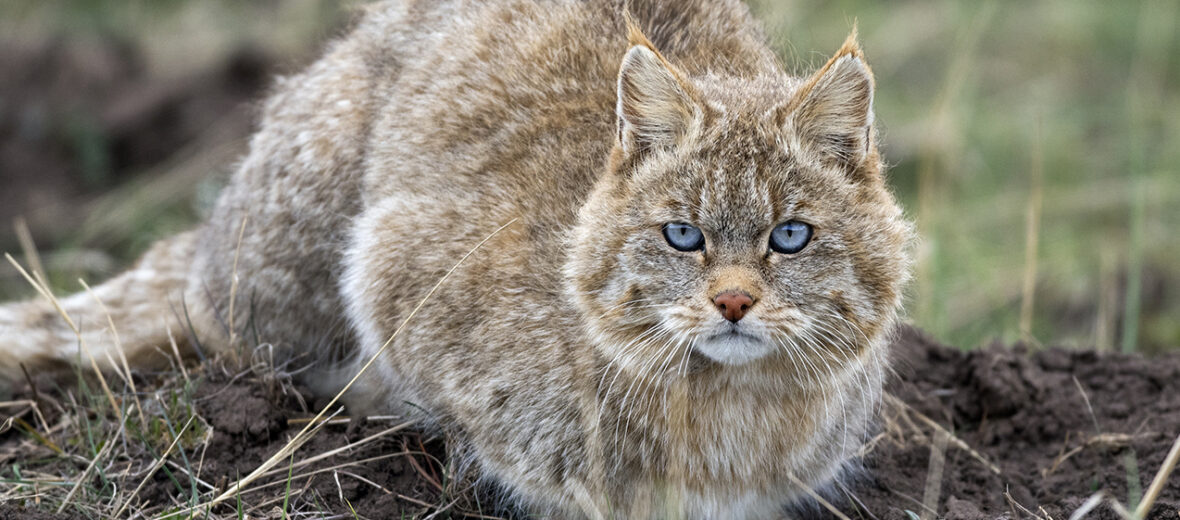
The Chinese mountain cat, aka Chinese steppe cat or Chinese desert cat, can be found on the north-eastern edge of the Tibetan Plateau. They prefer coniferous forest edges, alpine meadows, alpine shrublands, and high-elevation steppe grasslands. These cats are usually dwelling at altitudes of 8,200 – 16,400 feet. With a limited range and only an estimated 10,000 (or fewer) remaining in the wild, these cats are listed as Vulnerable by the IUCN. They are hunted for their fur and they are subject to secondary poisoning as their primary prey item is often poisoned. Sadly, their numbers are also decreasing.
First the Stats…
Scientific name: Felis bieti
Weight: Up to 12 lbs.
Length: Up to 33 inches, plus up to a 16 inch tail
Height: Up to 12 inches
Lifespan: Up to 12+ years
Now on to the Facts!
1.) These mountain cats are solitary, like most other cats.
2.) Their hides consist of abandoned animal burrows and hanging out under boulders.
3.) Female burrows are usually deeper and more protected than those of males.
4.) Using their acute sense of hearing, they will listen for the shuffling sound made by their prey and then dig them out.
5.) Chinese mountain cats prey primarily on pikas. But they will also gladly take voles, various mice, rats, reptiles, and birds.
But wait, there’s more on the Chinese mountain cat!
6.) A groups of cats is called a clowder, clutter, destruction, or pounce.
7.) These cats, like many other cats, are polygynandrous (males and females mate with multiple partners).
Did you know…?
These cats are a relatively newer classified species of cat. They only recently (1992) received their common name of Chinese mountain cat. They have also only been known as an individual species since 2017.
8.) Females undergo up to a 75 day gestation (pregnancy) that yields up to 4 kittens.
9.) They are nocturnal (active at night), like other cats.
10.) Males are called tomcats, females are called queens, and juveniles are called kittens.
Now a Short Chinese Mountain Cat Video!
Be sure to share & comment below! Also, check out the Critter Science YouTube channel. Videos added frequently!
Want to suggest a critter for me to write about? Let me know here.



